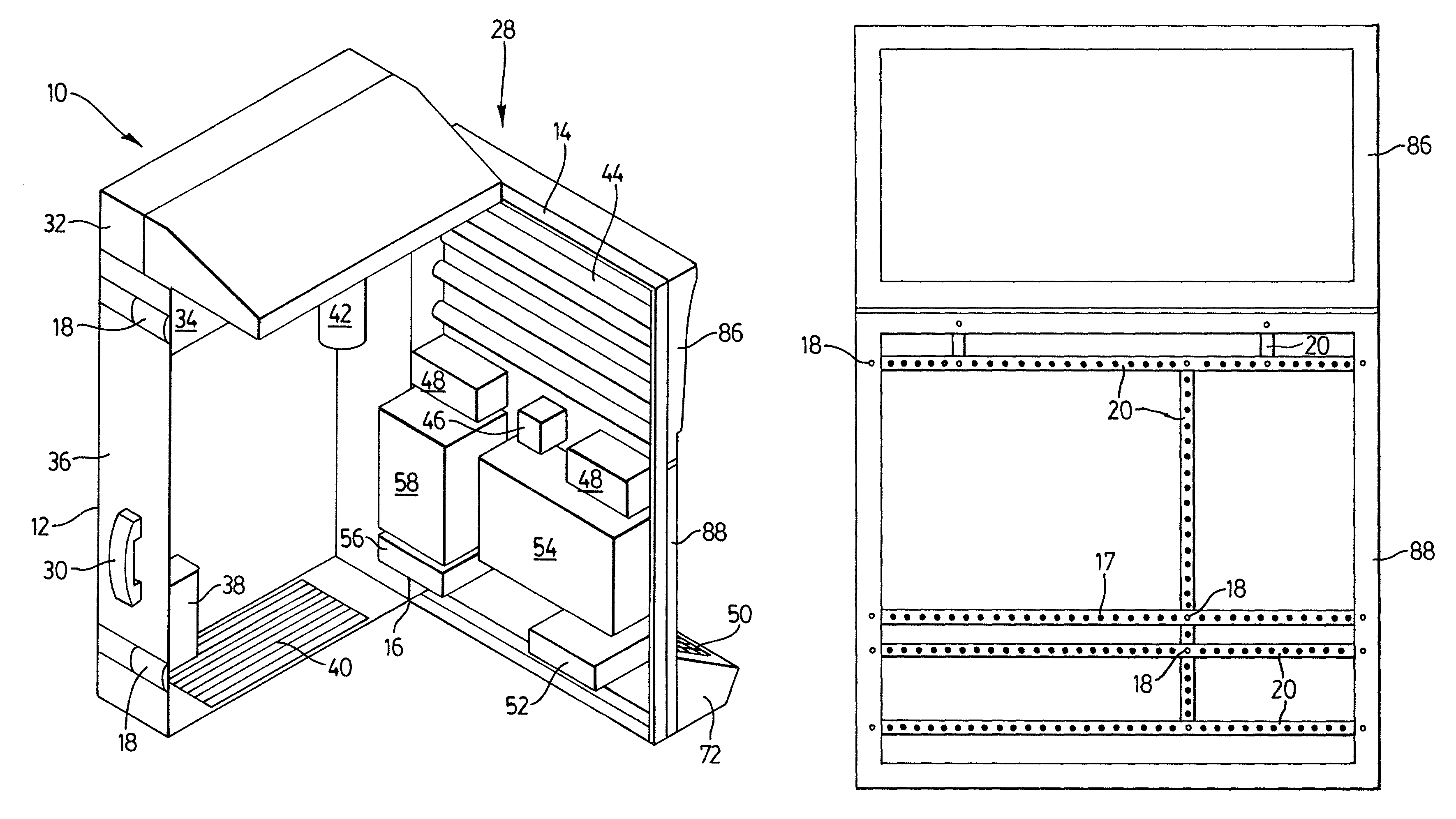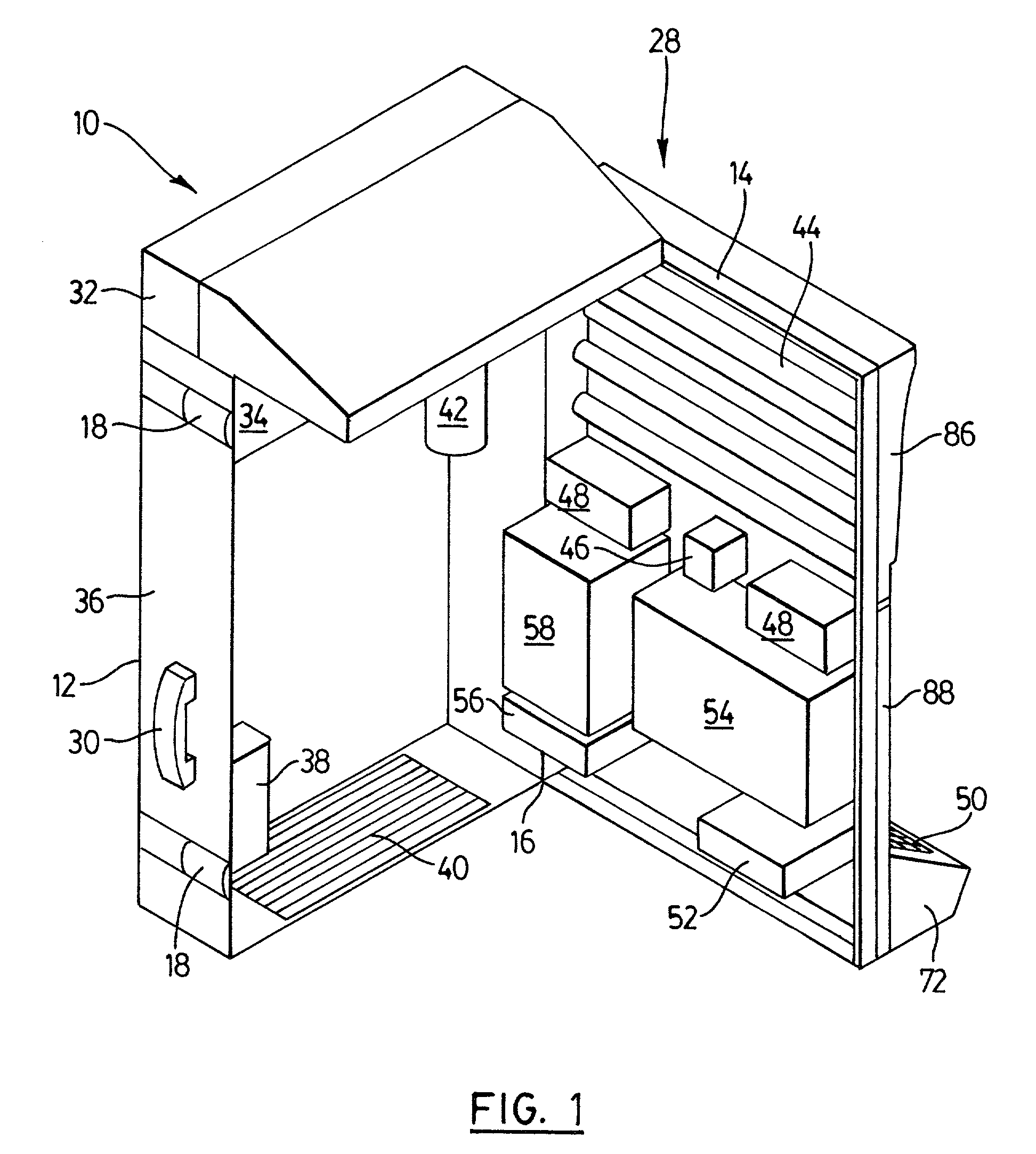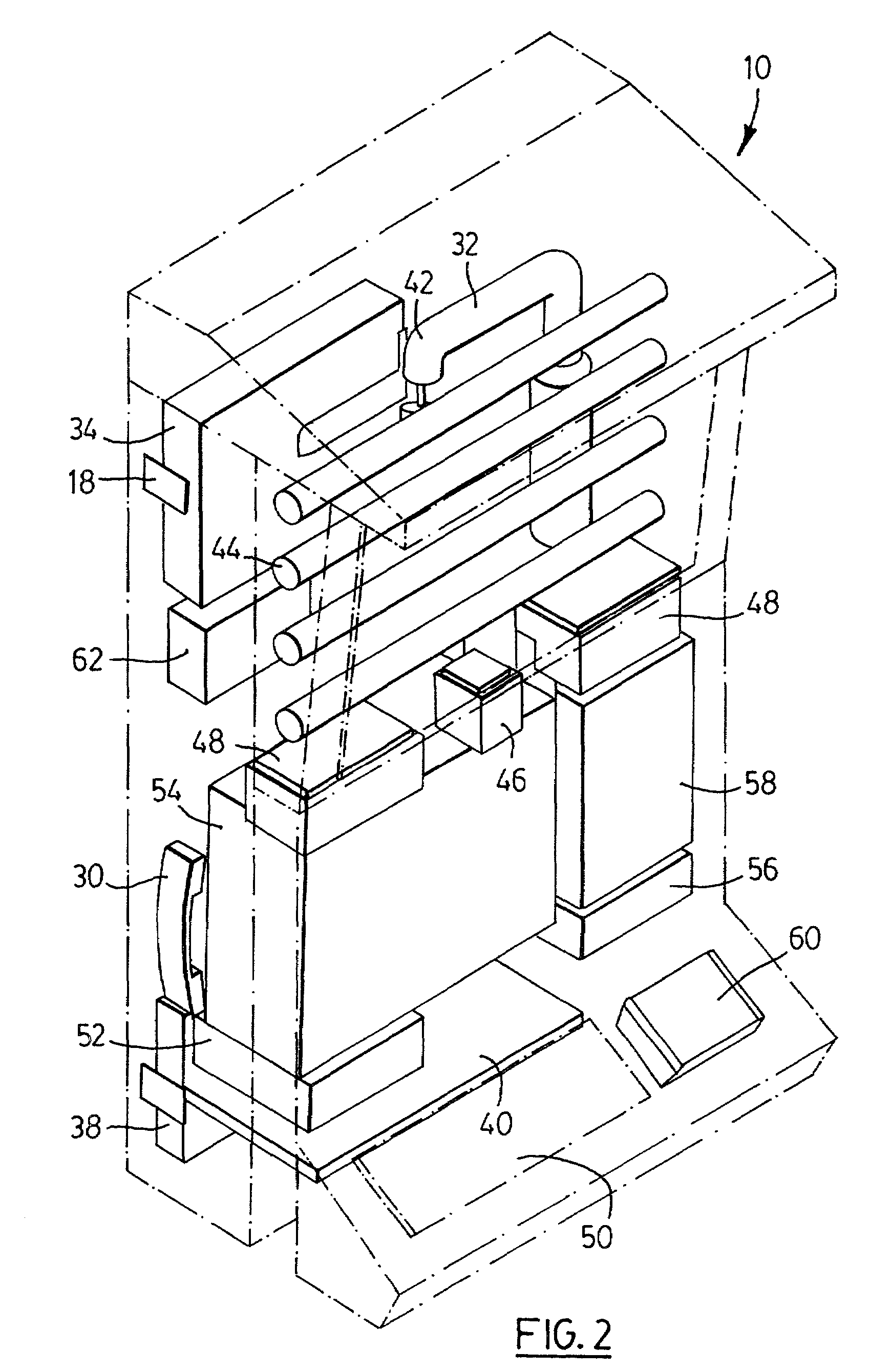Modular kiosk
a kiosk and module technology, applied in the field of kiosks, can solve the problems of inaccessible internal hardware components for servicing, inability to change the selection of components or the relative size and shape of components, and high cost and time-consuming to design and build kiosks, so as to achieve the effect of quick change of hardware components
- Summary
- Abstract
- Description
- Claims
- Application Information
AI Technical Summary
Benefits of technology
Problems solved by technology
Method used
Image
Examples
Embodiment Construction
[0036]As used herein, “kiosk housing” refers to housing which allows user access to user interface portions of hardware components while preventing public access to fragile or removable portions of the components, thereby making it possible to provide the user interface equipment to the public for their use in an unsupervised or semi-supervised setting. Service access to the internal components of the housing is necessary to provide maintenance and to replenish consumable supplies, such as paper.
[0037]As seen in FIG. 1, the kiosk housing 10 has a base cabinet 12. Fastened to cabinet 12 by a hinge 16 at one vertical edge, and fasteners 18 opposite, is face frame 14. Face frame 14 is, in turn, fastened to and supporting upper frame 86 and main frame 88. In an alternative embodiment, as shown in FIG. 8H, the face frame may be integral to main frame 88.
[0038]As seen in FIG. 7, an arrangement of cross members 20 are fastened to main frame 88 and to other cross members 20 by fasteners 18....
PUM
 Login to View More
Login to View More Abstract
Description
Claims
Application Information
 Login to View More
Login to View More - R&D
- Intellectual Property
- Life Sciences
- Materials
- Tech Scout
- Unparalleled Data Quality
- Higher Quality Content
- 60% Fewer Hallucinations
Browse by: Latest US Patents, China's latest patents, Technical Efficacy Thesaurus, Application Domain, Technology Topic, Popular Technical Reports.
© 2025 PatSnap. All rights reserved.Legal|Privacy policy|Modern Slavery Act Transparency Statement|Sitemap|About US| Contact US: help@patsnap.com



